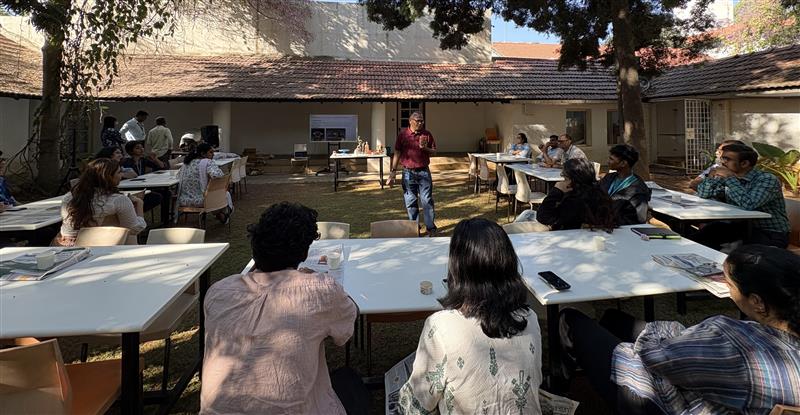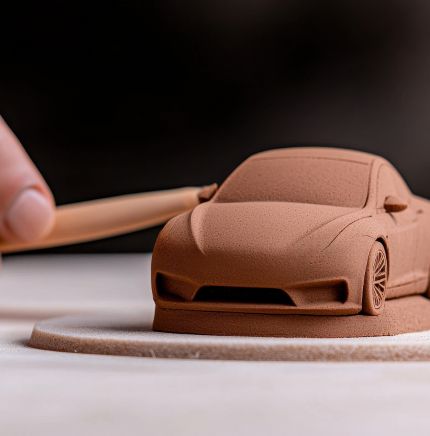Executive Summary
The "Get-Set-Sculpt" clay modeling workshop, led by Nilesh Akode, was a vibrant event that brought together product designers to unleash their creativity and explore the tactile world of clay modeling. This engaging session allowed participants to transform their ideas into tangible, sculpted masterpieces, fostering a hands-on approach to design innovation. The workshop highlighted the importance of traditional techniques in modern design, providing a unique platform for designers to explore their imagination and bring forth novel designs.
Introduction to Clay Modeling
Clay modeling is an ancient art form that has evolved over time, becoming an integral part of various design disciplines. It offers a tactile medium for designers to express their creativity, allowing them to shape and mold ideas into physical forms. This hands-on approach is particularly beneficial in product design, as it enables designers to visualize and refine their concepts in a more intuitive manner.
Nilesh Akode emphasized the value of clay modeling in fostering creativity and innovation. By engaging with clay, designers can explore different textures, shapes, and forms, which can lead to novel design solutions that might not emerge through digital tools alone. The workshop encouraged participants to embrace the imperfections and unpredictability of clay, using these aspects to drive creative experimentation.

The Clay Modeling Activity: Unleashing Creativity
The core of the workshop was a clay modeling activity where participants were encouraged to create various clay models. This exercise was designed to help designers let their creativity flow freely, without the constraints of digital tools. By working with clay, participants could explore different shapes, textures, and forms, allowing them to develop a deeper understanding of spatial relationships and material properties.
The activity was structured to allow participants to experiment with different techniques, such as pinching, coiling, and sculpting. This hands-on approach enabled them to develop a tactile understanding of design principles, including balance, proportion, and texture. The models created during the workshop ranged from abstract sculptures to functional prototypes, showcasing the versatility of clay as a design medium.
Cross-Disciplinary Approaches in Design
The workshop highlighted the importance of cross-disciplinary approaches in design. By combining insights from various fields, designers can create more comprehensive and innovative solutions. Clay modeling, in particular, encourages collaboration between art, design, and engineering, allowing designers to explore new materials and techniques that can inform their digital designs.
Nilesh Akode emphasized that the tactile nature of clay modeling can inspire novel ideas and solutions that might not emerge from purely digital design processes. This approach also fosters a deeper understanding of the physical properties of materials, which is crucial for creating functional and aesthetically pleasing products.
Key Aspects of Clay Modeling in Design
Clay modeling offers several key benefits in the design process:
- Tactile Creativity: It allows designers to explore ideas in a hands-on manner, fostering creativity and experimentation.
- Material Exploration: Clay provides a versatile medium for testing different textures and forms, which can inform material choices in final products.
- Spatial Understanding: Working with clay helps designers develop a deeper understanding of spatial relationships and proportions.
Challenges and Opportunities in Design
The design industry faces numerous challenges, from technological advancements to environmental concerns. However, these challenges also present opportunities for innovation. Clay modeling, as a traditional craft, offers a unique perspective on design, encouraging designers to think outside the digital realm and explore new ways of creating and interacting with materials.
Moreover, the rise of sustainable design practices highlights the importance of materials and processes that are environmentally friendly. Clay, as a natural and reusable material, fits well into this narrative, providing designers with a sustainable medium for creative expression.
Looking Ahead
As design continues to evolve, the role of clay modeling will remain significant. It offers a tangible and creative outlet for designers, allowing them to explore new ideas and refine existing concepts in a more intuitive manner. The integration of clay modeling with digital design tools will continue to drive innovation, enabling designers to create products that are both aesthetically pleasing and functional.
In the future, we can expect to see more emphasis on sustainable materials and processes in design. Clay modeling, with its focus on tactile creativity and material exploration, will play a crucial role in shaping the next generation of designers and design solutions.
Conclusion
The "Get-Set-Sculpt" clay modeling workshop was a testament to the power of tactile creativity in design. By embracing the imperfections and unpredictability of clay, designers can unlock new avenues for innovation and experimentation. As the design industry continues to evolve, the importance of combining traditional techniques like clay modeling with modern digital tools will only grow, leading to more holistic and sustainable design solutions.
In this era of rapid technological advancement, workshops like "Get-Set-Sculpt" remind us of the enduring value of traditional craftsmanship in fostering creativity and innovation. By blending the tactile with the digital, designers can create products that not only reflect our imagination but also contribute to a more sustainable and connected world.
Author
Associate Manager-Business Strategy & Operations
Tata Elxsi




